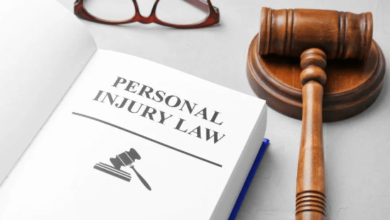
How to Prove Workplace Discrimination in California: A Legal Guide for Employees
Workplace discrimination can be difficult to confront, but California laws provide strong protections for employees facing unfair treatment. Whether you’re dealing with discrimination based on race, gender, age, disability, or sexual orientation, knowing how to prove your case is essential to seeking justice. This guide will walk you through the steps necessary to document and gather evidence of workplace discrimination, emphasizing the legal standards for proving such cases in California. A knowledgeable San Jose workplace discrimination attorney can help you navigate this process and increase your chances of a successful claim.
Step 1: Understand What Constitutes Workplace Discrimination
Before you begin gathering evidence, it’s important to understand what qualifies as workplace discrimination under California law. Discrimination occurs when an employer treats an employee unfavorably based on a protected characteristic, such as:
- Race or ethnicity
- Gender or gender identity
- Sexual orientation
- Age (if the employee is 40 or older)
- Disability (physical or mental)
- Religion
- Pregnancy
- National origin
In California, the Fair Employment and Housing Act (FEHA) and federal laws like Title VII of the Civil Rights Act protect employees from discrimination based on these characteristics. Discrimination can manifest in many ways, such as unfair hiring practices, denial of promotions, pay disparities, wrongful termination, or a hostile work environment. Recognizing discriminatory behavior is the first step in building a case.
Step 2: Keep Detailed Records
To prove workplace discrimination, you need solid evidence. Begin by documenting every instance of discriminatory behavior or unfair treatment. Include the following details:
- Date and Time: Keep a record of when each incident occurred.
- Location: Note where the incident took place, whether it was in a meeting, during a performance review, or in a more informal setting.
- People Involved: List the names of those who were present, including any witnesses.
- Description of Events: Write down exactly what was said or done, avoiding emotional language and sticking to the facts.
Emails, text messages, and other written communications can serve as powerful evidence in a discrimination case. If discriminatory comments or actions are made in writing, save copies of these communications. Additionally, document any changes in your job responsibilities, performance evaluations, or disciplinary actions that seem to be related to discriminatory motives.
Step 3: Report the Discrimination Internally
Most companies have policies and procedures in place to handle workplace discrimination. As soon as you suspect discrimination, report it to your supervisor, human resources (HR), or a designated officer within your organization. Filing an internal complaint creates a paper trail, which can support your claim if the issue escalates.
Make sure to file your complaint in writing, either through email or a formal complaint form, and keep a copy for your records. Be specific about the incidents you are reporting and include the documentation you have gathered. If the company fails to address the issue or retaliates against you for making a complaint, it strengthens your case for taking legal action.
Step 4: Gather Witness Testimony
In many workplace discrimination cases, witnesses can provide crucial evidence. If co-workers observed the discriminatory behavior or were present during key conversations, their testimony can support your claim. Reach out to potential witnesses and ask if they would be willing to provide a written statement or testify on your behalf.
However, be mindful of the workplace dynamics when discussing your case with colleagues, as this could affect relationships or lead to retaliation. If you’re unsure how to approach witnesses, a San Jose workplace discrimination attorney can guide you through this process and help you obtain the necessary testimony.
Step 5: File a Complaint with the DFEH or EEOC
If internal reporting does not resolve the issue, the next step is to file a formal complaint with the California Department of Fair Employment and Housing (DFEH) or the Equal Employment Opportunity Commission (EEOC). These agencies are responsible for investigating workplace discrimination claims.
In California, you typically need to file a complaint with the DFEH within three years of the discriminatory act. Once your complaint is filed, the agency will investigate and may offer mediation between you and your employer. If the DFEH or EEOC finds evidence of discrimination, they may issue a “right-to-sue” notice, allowing you to take your case to court.
Read also: What Kinds of Cases Can a Criminal Lawyer Handle?
Step 6: Seek Legal Representation
Workplace discrimination cases can be complex, and proving discrimination requires a thorough understanding of employment law. An experienced San Jose workplace discrimination attorney can help you build a strong case by:
- Reviewing your documentation and evidence
- Advising you on the strength of your case
- Negotiating with your employer or their legal team
- Representing you in court if necessary
A lawyer can also help ensure that you meet all filing deadlines and procedural requirements, so your case is not dismissed on a technicality. Additionally, they can assist in obtaining witness testimony, expert opinions, and other forms of evidence to support your claim.
Step 7: Prepare for Legal Action
If your case goes to court, you’ll need to present compelling evidence to prove that the discrimination occurred. This may include documentation, witness testimony, and expert reports. Your attorney will help you prepare for depositions, hearings, and trial, ensuring that your rights are protected throughout the legal process.
Proving workplace discrimination in California can be challenging, but by following these steps and working with a skilled San Jose workplace discrimination attorney, you can build a strong case. From documenting incidents to gathering witness testimony and filing formal complaints, taking the right steps early on can significantly improve your chances of achieving a fair outcome. If you believe you have been the victim of workplace discrimination, don’t hesitate to seek legal advice and protect your rights.






